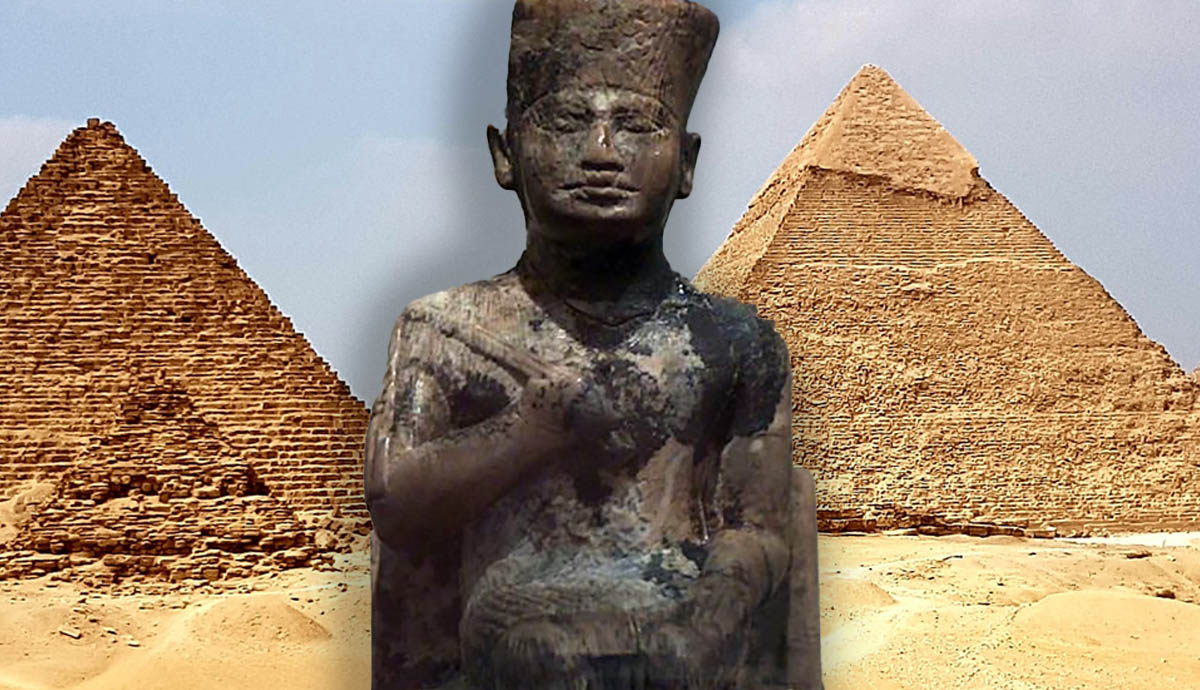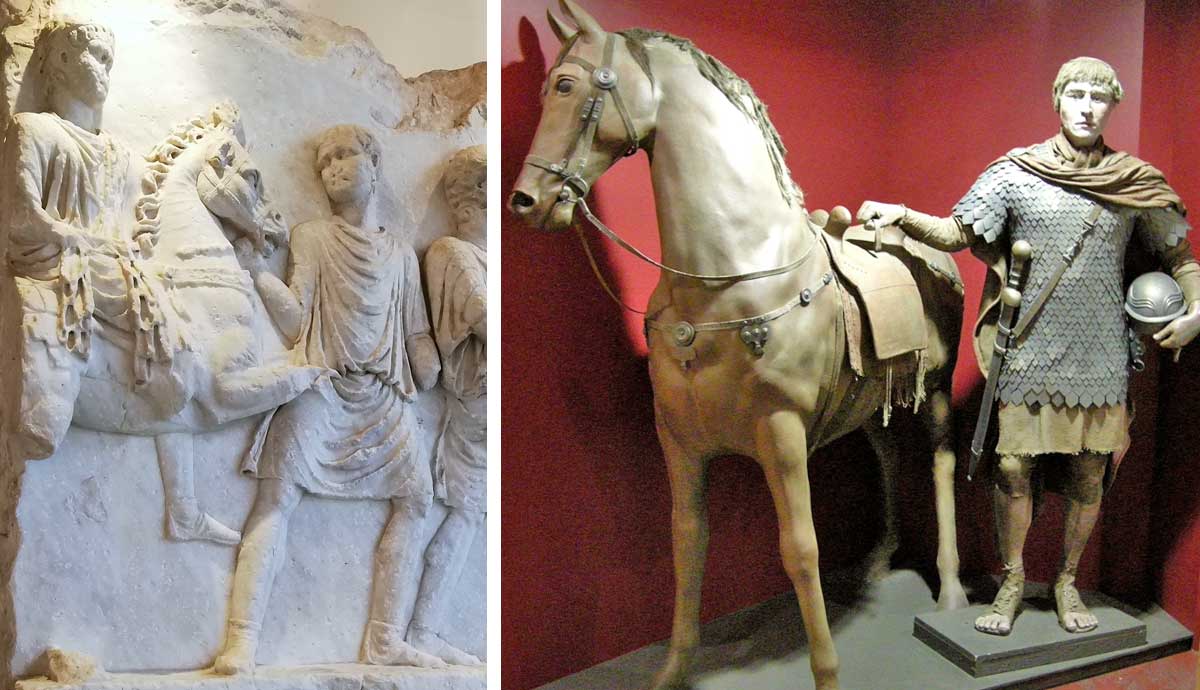
summary
- The Great Pyramid of Khufu (c. 2589-2566 CE) was built during a “golden age” of Egyptian wealth, based on pyramid structures pioneered over the previous century.
- Herodotus, writing two millennia later, claims that Khufu must have enslaved his people to accomplish this feat, but archaeology suggests the pyramids were built by free, professional builders.
- Standing 6 meters tall, the Great Pyramid was the tallest manmade structure in the world for 4,000 years, and is the only one of the Seven Wonders of the Ancient World still standing.
The Great Pyramid at Giza is the most recognizable of the Seven Wonders of the Ancient World. It is also the only ancient wonder that is still standing, and the only ancient wonder considered among the modern Seven Wonders of the World. It was built by the Pharaoh Khufu, or Cheops in Greek, about whom surprisingly little is known considering his architectural legacy. Herodotus described him as a cruel and tyrannical ruler who made human sacrifices and enslaved the population to build his great pyramid. But archaeological evidence suggests that the pyramid was built by free, professional workers, and that Khufu oversaw a period of significant economic prosperity. Learn more about the Great Pyramid and its context with seven essential facts.
Quick Facts About the Great Pyramid of Giza
| Built | c. 2589-2566 BCE |
| Creators | Built for Pharaoh Khufu, using techniques used to create Djoser’s Step Pyramid and Sneferu’s Red Pyramid, the first true pyramid |
| Location | Giza Plateau, Egypt |
| Overview | Originally 146.6 meters tall and a base 230.33 meters per side, made from 2,3 million stone blocks |
| Destruction | It is the only ancient wonder still standing |
The Great Pyramid Was Built for the Pharaoh Khufu

The Great Pyramid was built for the Pharaoh Khufu (c. 2589-2566 BCE), who was the second pharaoh of the 4th dynasty, succeeding his father Sneferu to power. He also inherited his father’s penchant for pyramid building. The Step Pyramid was built for Djoser of the 3rd dynasty (c. 2670-2640 BCE), imitating earlier mastaba tombs by piling one on top of another. It was then Sneferu who pioneered the first true pyramid. He first built step pyramids at Seila and Meidum, and then the Bent Pyramid and Dashur. The builders had to change to angle of the slope mid-construction to make it architecturally sound, giving it its distinct bent appearance. This paved the way for his Red Pyramid at Dashur, the first successful, true pyramid.
Beyond his pyramid, very little is known about him. Herodotus gives an account of his reign, but he was a Greek writing in the 5th century BCE, two millennia later. His account seems to be more what he imagined the type of pharaoh who could build a great pyramid would have been like.
The only surviving complete image of Khufu is a small ivory statuette found in Abydos in 1903. It is unclear how long he ruled. The Royal Canon of Turin acknowledges a total of 23 years for Khufu, while Herodotus gives an estimate of 50 years. Another ancient historian, Manetho, says that Khufu ruled for 63 years.
| TIMELINE OF PYRAMID CONSTRUCTION IN EGYPT | |
| 2670-2613 BCE | Construction of the Step Pyramid of Djoser (3rd dynasty) |
| 2613-2589 BCE | Sneferu constructs four pyramids, moving from step pyramids to true pyramids (Bent and Red Pyramids) (4th dynasty) |
| 2589-2566 BCE | Great Pyramid of Khufu constructed at Giza (4th dynasty) |
| 2558-2532 BCE | Pyramid of Khafre constructed at Giza (4th dynasty) |
| 2532-2503 BCE | Pyramid of Menkaure constructed at Giza (4th dynasty) |
| 2500-1650 BCE | Pyramids continue to be constructed on a smaller scale |
| 1550-1525 BCE | The last known pyramid of Ahmose I was built at Abydos (18th dynasty) |
| 1539-1075 BCE | Pharaohs began to be buried in hidden tombs in the Valley of the Kings, at least in part to discourage grave robbing (18th-20th dynasties) |
| 460-455 BCE | Herodotus visited Egypt and wrote about the pyramids |
We Don’t Know How the Great Pyramid Was Built

The Great Pyramid is made from more than 2.3 million stone blocks, weighing a total of around six million tonnes. The stones included locally sourced limestone, giant granite blocks transported from distant Aswan in southern Egypt, about 1,000 kilometers (621 miles) away, and fine white limestone casing stones from nearby Tura. Considering the technology of the day, we still don’t really know how the stones were transported and laid.
Herodotus suggests that Khufu needed a workforce of 100,000 men, which leads him to characterize Khufu as a tyrant who enslaved a considerable part of the Egyptian population to build his pyramid. He also claims that it took 20 years to build the pyramid and that it was 800 feet tall, which is almost double its true height.
This glaring inaccuracy suggests that his account is questionable, so we can’t be sure of his claim that the workers stacked stone bases on top of each other to build the internal pyramid and then used wooden scaffolding to apply the casing stones, giving the pyramid its smooth, shining finish. He certainly doesn’t explain how the workers created the internal chambers of the pyramid.

Herodotus also claims that his informant, an unnamed priest, read him a hieroglyphic inscription that detailed the costs and materials of the pyramid. After stating exactly how many radishes and onions were needed to feed the workers, the document allegedly explained how the king was able to afford this monument:
“And so evil a man was Kheops that, needing money, he put his own daughter in a brothel and made her charge a fee (how much, they did not say). She did as her father told her, but was disposed to leave a memorial of her own, and asked of each coming to her that he give one stone.”
(Historiae, II, 126, 1)
According to Herodotus, Khufu’s daughter was able to build a small pyramid of her own thanks to the surplus stones she earned in the brothel. But there is no other evidence for this fanciful tale that may have reinforced Greek ideas about ancient Egypt, and we certainly don’t have any evidence of her pyramid.
Tools discovered alongside quarries and worker settlements associated with the pyramids, including copper chisels, stone hammers, and wooden sledges, suggest that the pyramids were built by a highly organized and skilled workforce. This suggests that they were professionals, rather than farmers pressed into slavery.
The Pyramids Reflect a Golden Age in Egyptian History

The 4th Dynasty has been called the “Golden Age of Pyramids” by historians. It had been around 500 years since Egypt began to be united under the pharaohs, starting with Narmer, and the country was now turning from internal power struggles to empire-building. The rise of the pyramid at this time reflects the growing power of Egypt and its pharaohs.
The Old Kingdom, the 3rd to 6th dynasties, was characterized by the concentration and specialization of the government, the organization of religion, and massive territorial expansion. During the 4th dynasty, Egyptian pharaohs ruled over Libya, the Sinai Peninsula, and a good part of Nubia to the south. The worship of the sun god Re became commonplace and expanded to all territories. The belief emerged that the pharaoh was Re’s representative on earth and joined him after death. The pyramids reflected this idea. Capped in brilliant white limestone and with a gold tip, the pyramids would have gleamed like the sun.
It Was the Tallest Structure in the World for 4,000 Years

The Great Pyramid was an unprecedented architectural feat at the time it was built, but it was clearly built expertly, as it is still standing after almost 6,000 years. When it was initially built, it probably stood around 146.5 meters, or 481 feet. This made it the tallest structure on earth, and it remained so until 1311 and the construction of Lincoln Cathedral in England, standing at 160 meters.
Construction workers took advantage of an existing limestone hillock to save materials. They partially cut the foundation from the existing natural bedrock to create a level surface. Considering that the calculated volume of this Egyptian pyramid amounts to roughly 2.6 million cubic meters (92 million cubic feet), this strategy would have lowered costs significantly.

More than just an imposing structure, the pyramid contains two chambers, which remain structurally sound. The King’s and the Queen’s chambers once contained their granite sarcophagi. The pyramid was complemented by a huge funerary complex that included two mortuary temples, some subsidiary tombs belonging to the family of the king and his court, four smaller satellite pyramids, and a burial place where solar barges were found.
For Centuries, They Were Believed to Be Joseph’s Granaries

The pyramids have inspired many myths and legends over the millennia. One of the most famous is that they were the granaries of Joseph, of “Technicolor Dreamcoat” fame, from the Bible. While Napoleon may have slept inside the Great Pyramid during his 1798 military campaign in imitation of the Egyptian kings, in late antiquity, no one remembered that they were tombs. Instead, they were believed to be granaries.
During Roman rule of Egypt, especially after the Empire adopted Christianity under Constantine the Great, pilgrims flocked to the Holy Land, and almost always passed through Alexandria in Egypt. Ascetic monks on their way back from Jerusalem confirmed that the pyramids were indeed the granaries where Joseph stored corn, just before the years of famine, when it was badly needed by the Jewish people.
In the 6th century CE, a priest by the name Stephanos of Byzantium posited the theory that the word pyramid came from the Greek πυρός (pyros), which meant wheat. This was partly true, as it is now believed that the word pyramid comes from a Greek word used to describe a kind of wheat cake, which was allegedly pyramidal in form. Only in the 16th century CE was the word pyramid used in its modern, geometrical sense. Around this time, too, it was finally proven that the Egyptian pyramids were funerary monuments, and ancient kings were buried inside.
Khufu Was Buried With a Sun Barge

An impressive discovery was made in 1954 when explorers unearthed a perfectly preserved full-size solar barque from a pit near the Great Pyramid. While it was not the only boat to have been found buried in the area, the fact that it was fully intact allowed researchers to learn more about the function of these boats. It seems that Khufu’s boat was intended to help the pharaoh navigate his way in the Underworld, in imitation of Re, who sailed his sun barge through the Underworld every night, fighting the monstrous god Apophis.
Khufu’s boat is 43.4 meters (142 feet) long and 5.9 meters (19 feet) wide. Some scholars have calculated that if it were tossed into the River Nile, it would be perfectly capable of sailing. This goes to show the impressive craftsmanship that ancient Egyptians were capable of. A museum was built right next to the Great Pyramid to house the ship, and it remained inside it until August 2021, when it was relocated to the new Grand Egyptian Museum.
Many Esoteric Theories Exist About the Pyramids

Despite the clear evidence that it was the ancient Egyptians themselves who built the Great Pyramid, because of the difficulty that must have been involved, several esoteric theories involving aliens, impossible astronomical calculations, and lost civilizations have emerged.
Paradoxically, most of these theories tend to exaggerate the “perfection” of the pyramid. In reality, not one of its millions of stone blocks is perfectly cubical, and the traces of chisels and other human tools are there for everyone to see in each one of them. Many later graffiti present in ostraca found in the pyramid towns show the signatures of gangs of workmen who claim to have built these monuments. That is why they are a wonder of human ingenuity.
OTHER WONDERS OF THE ANCIENT WORLD










